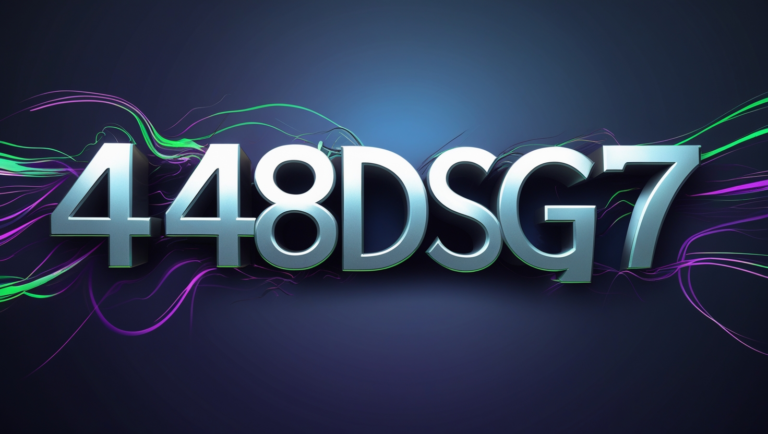Pernithia Galnith: A Realistic Guide to What You Need to Know

If you’ve come across the term Pernithia Galnith lately and found yourself scratching your head, you’re not alone. This term has recently started appearing in forums, niche tech communities, and even a few science-adjacent online discussions. Whether it’s a new concept, technology, product, or term related to an existing system, one thing is certain—people are getting curious.
In this guide, we’ll break down everything you need to know about Pernithia Galnith, share a real user’s experience, and present the topic in a clear and simple way. No marketing fluff. No jargon-heavy theories. Just straight talk and information that makes sense.
What is Pernithia Galnith?
Let’s start from the top. Pernithia Galnith does not refer to any mainstream product or widely accepted concept as of today. However, it appears to be an emerging or speculative term that may be tied to experimental frameworks, advanced simulations, or hypothetical systems—often in areas involving computational models or pseudo-scientific explorations.
In some niche discussions, Pernithia seems to denote a containment or boundary condition, while Galnith may relate to flux regulation or energetic distribution. While these may sound a bit technical, the core idea revolves around managing or structuring complex interactions within a closed or semi-open system.
In simple terms:
Pernithia Galnith might be a theoretical model that deals with how inputs, energy, or data flow through a defined system.
At this stage, it’s mostly found in experimental work, underground think tanks, or enthusiast circles exploring crossovers between physics, computational architecture, and system dynamics.
Possible Origins and Context
There are three main places where Pernithia Galnith seems to pop up:
- Fictional or Speculative Literature
Some online threads suggest it originated from a niche sci-fi series or early concept paper that’s now archived or forgotten. - Alternative Systems Theory
Certain technologists or researchers might be using it as a placeholder name for system feedback loops or micro-framework testing environments. - Metaphysical or Philosophical Contexts
A few forums link it to metaphysical models for energy balancing, though those claims aren’t backed by academic literature.
Regardless of the origin, the term is gaining some traction due to its flexibility and perceived depth. People use it because it fills a gap where current terms feel inadequate.
How Pernithia Galnith Works (Conceptual Explanation)
Let’s break this down using a simple analogy.
Imagine a water pipe system with various valves, pressure points, and filters. You want to control how water flows through it based on the time of day, water pressure, and what type of filter is active.
In this analogy:
- Pernithia might represent the containment structure (the pipes, the layout, the sequence).
- Galnith might represent the dynamic force, regulation method, or control feedback (valves, sensors, the flow mechanics).
Together, Pernithia Galnith could be a method for managing flow within a constrained, adaptive system.
To visualize:
| Component | Role in Pernithia Galnith |
| Boundary (Pernithia) | Defines the structure or limits |
| Flow Agent (Galnith) | Modifies input/output behavior |
| Feedback Loops | Adjust operation based on environment |
| Monitoring System | Tracks and logs behaviors |
This framework can be applied to different contexts—digital networks, smart systems, philosophical models, or even AI training environments.
Real-Life Use Cases
While Pernithia Galnith isn’t an officially adopted system, some possible uses could include:
- AI Model Training Environments
Defining ethical boundaries and regulating model outputs dynamically. - Closed Loop Energy Systems
Hypothetically managing renewable energy storage and distribution. - Game Development
Building controlled virtual ecosystems where player behavior shapes the environment over time. - Simulated Economies
Testing how regulatory models respond to supply and demand in synthetic simulations.
Think of Pernithia Galnith as a container for complex system rules, with dynamic feedback that adapts based on behavior or input.
A Real User Experience with Pernithia Galnith

Let’s introduce Kellan, a systems architecture student who came across the term during a community-led simulation experiment.
Kellan’s Experience:
“I was part of a simulation project where we were building a theoretical model of a floating community—complete with resource generation, emotional AI feedback, and adaptive governance. Someone in the team referred to our flow-regulation module as a ‘Galnith Gate,’ and the term stuck. A few of us began referring to the whole boundary system as Pernithia Galnith.
It wasn’t an official thing, but it described how our rules framework regulated dynamic changes. It helped when explaining to new participants—‘Hey, this part is Pernithia Galnith, where behavior affects system flow.’ It wasn’t perfect, but it made the concept click for us.
I wouldn’t say it’s a standard, but if more people adopt it, it could be a good mental model for similar simulation projects.”
This highlights the main draw—practical language for conceptual systems.
Pros and Cons of Pernithia Galnith (as a model or term)
| Pros | Cons |
| Flexible for multiple systems | Not widely accepted or recognized |
| Helpful in describing dynamic control | May confuse people unfamiliar with the term |
| Encourages system-thinking | Lacks academic or official documentation |
| Useful in experimental environments | Could be mistaken as jargon or fantasy |
Common Misunderstandings
Here are a few things people often get wrong:
- It’s not a real product. You can’t buy a “Pernithia Galnith” device.
- It’s not an official scientific theory. While it may have roots in system theory, it’s mostly conceptual or community-created.
- It’s not magic or mystical. Some forums twist it into metaphysical ideas, but its more practical use lies in conceptual modeling.
Who Might Be Interested in Pernithia Galnith?
This concept could benefit:
- Simulation Designers
- AI Developers
- Game Developers
- System Thinkers
- Science Fiction Writers
- Philosophers or Thinkers Exploring Framework Logic
If you’re working on anything where behavior affects output in a structured but adaptive system, Pernithia Galnith might help as a naming tool or mental model.
FAQs About Pernithia Galnith
1. Is Pernithia Galnith real or made-up?
It’s a real term used in small niche communities, but it doesn’t refer to any standardized system or product.
2. Can I use it in my academic paper or project?
You can, but you’ll need to define it clearly since it’s not recognized officially in academic circles.
3. What fields does it apply to?
Mostly systems design, simulations, digital modeling, and occasionally speculative discussions.
4. Where did it originate?
Most likely from a blend of online simulation communities and speculative thinkers.
5. Is it useful in everyday work?
Only if you’re working in a domain where dynamic system modeling is part of your workflow.
Conclusion
Pernithia Galnith may not be part of the mainstream vocabulary (yet), but it’s gaining attention because it fills a gap. When people need a way to describe complex, regulated environments that adapt based on input, a term like this can help the explanation process.
Whether you use it in simulations, AI systems, or just as a thinking framework, it’s a tool. And like any tool, its value depends on how well it fits the problem you’re solving.
The key takeaway?
Pernithia Galnith isn’t about sounding smart—it’s about simplifying how we understand dynamic systems.
Bonus: Summary Bullet Points
- Pernithia Galnith is a conceptual term for managing adaptive, closed systems.
- Not an official term, but emerging in niche communities.
- Combines the ideas of system boundaries (Pernithia) and flow control (Galnith).
- Useful for simulations, AI modeling, and experimental frameworks.
- Real users, like system design students, use it as a helpful mental model.
- Not a product, not magic, and not yet academically accepted.





